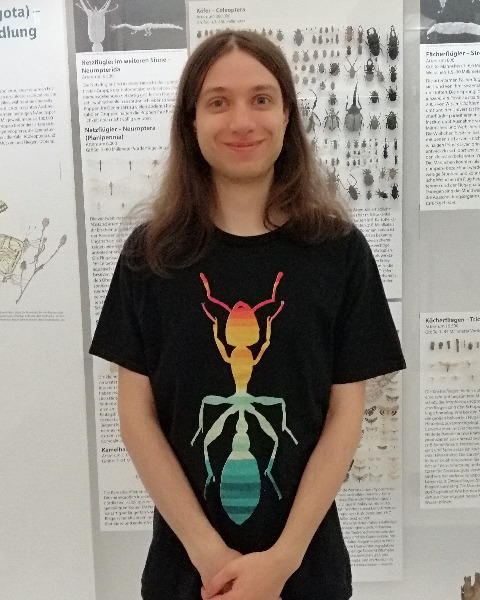Organized Meeting
Systematics, Evolution, and Biodiversity
SysEB Business Meeting
SysEB Snodgrass Memorial Research Award winner presentation
Monday, November 6, 2023
3:57 PM - 4:05 PM ET
Location: Gaylord National Resort & Convention Center, Maryland A

Adrian Richter (he/him/his)
JSPS International Postdoctoral Fellow
Okinawa Institute of Science and Technology
Onna, Okinawa, Japan
Presenting Author(s)
Ants are the most speciose group of social insects. While this diversity is well documented in the taxonomic and systematic literature, the anatomy and morphological evolution of ants has been comparatively neglected, with not a single morphological autapomorphy known for the "formicoid clade", containg most of ant diversity. In my dissertation, I focused on improving our knowledge of ant anatomy and evolution by focusing on the head, a tagma with many features important to the animals lifestyle. I employed micro CT scanning to study the head of five species form all major ant clades in detail and compare these to additional species from most ant subfamilies. Importantly, one of the species in my sampling was a stem group ant from cretaceous age amber, giving a glimpse into the early evolution of ants. I found a number of potential new, never hypothesized apomorphies for ants and several of the major clades within them, most of these being internal anatomical features or obscure features of the skeleton that have never been investigated in a phylogenetic context before. Among these are several features of the "sucking pump" of the foregut, which may be related to a switch to predatory diet in ants. We also found the first potential autapomorphy of the "formicoid clade", a modification of the mandibular articulation with unknown functional impact. In this presentation, I will give an overview of my approach to this dissertation project and highlight some of the main results.

.png)